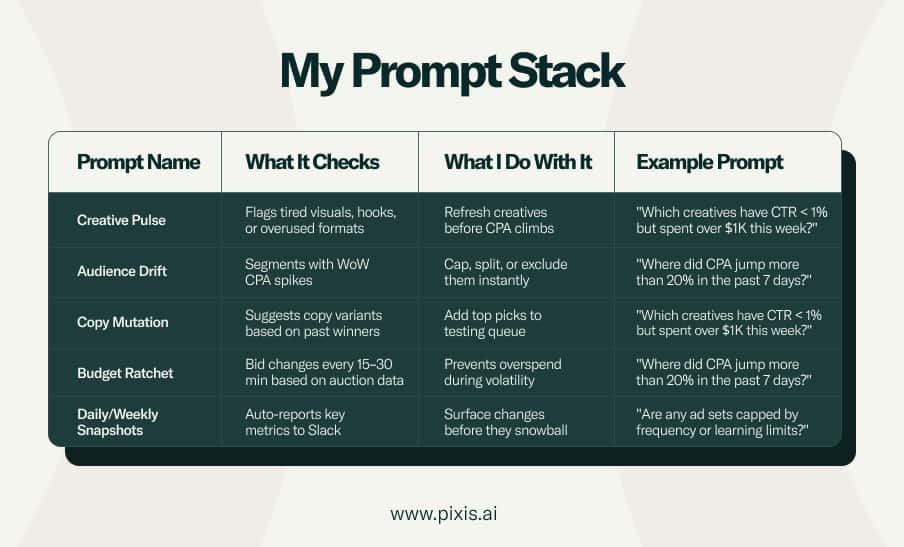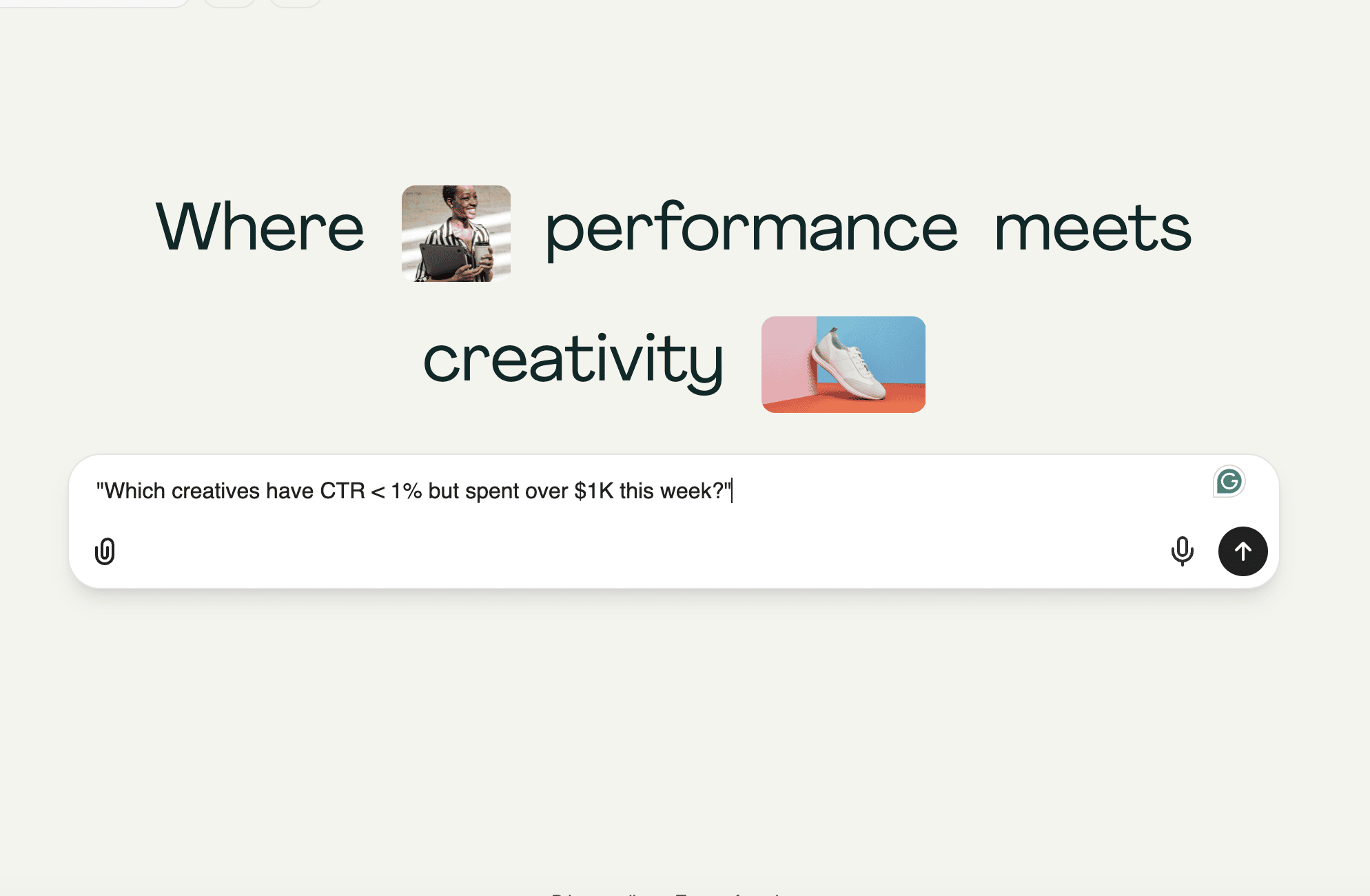How I Audit My Meta Ads Account (And What You Can Steal From It)

Field Notes from the Front Lines
Meta ad spend doesn’t wait. I learned that the hard way during a major sales push—our spend tracker jumped from a steady hum to full-on chainsaw mode. Every second I delayed was another dollar tacked onto CAC. That’s when it hit me: an audit isn’t a quarterly report. It’s life-support.
Over the years, auditing my Meta ads account has become less of a chore and more of a ritual. I run these audits not just to fix what’s broken, but to stay sharp—to keep the machine lean, responsive, and profitable. And because I get asked this all the time, I decided to write down exactly how I do it.
This isn’t a generic checklist. It’s the same approach I use whether I’m managing $500/day or $50,000/day. It’s built on two principles: (1) see the system clearly, and (2) act fast but precisely. I switch between two modes depending on the moment: deep manual review when I want to touch every wire, and AI-driven diagnostics when I’m racing the clock.
Here’s how both approaches work—and what you can borrow for your own accounts.
First: Auditing vs. Testing
One thing that trips up a lot of marketers: confusing audits with tests.
- Auditing is about identifying what’s working and what isn’t. It’s a diagnosis.
- Testing is about trying something new based on what you learned in the audit. It’s a prescription.
This article is about the audit—where to look, what to ask, and how to spot the weak links.
Step-by-Step: My Manual Meta Ads Audit
Time commitment: 2–3 hours per week
When I use it: New launches, creative resets, unexplained drops in performance
Step 1: Start With a North-Star Metric
I begin every audit with one number that matters most to the business right now:
- For ecommerce: CAC (Customer Acquisition Cost)
- For lead-gen: CPL-to-LTV ratio or Payback Window
Everything else is noise until I know what that metric I actually need to optimize for.
Step 2: Audit the Foundations
Before I touch campaigns, I make sure the plumbing is in place:
- Pixel & CAPI – Is my tracking working across devices and browsers?
- Permissions – Who can access what? Any outdated users with edit rights?
- Attribution windows – Are we using a 7-day click when the buying cycle is 21 days?
- Naming conventions – Are my campaign names readable, sortable, and clear?
If the basics are broken, no tactic will fix performance.
Step 3: What looks ‘off’?
Sometimes there’s an obvious problem trend, a spike or a dip that demands further investigation. If I don’t see anything like that, doing some gut-checks against industry and platform benchmarks is my go-to.
I don’t decide what’s wrong here (if anything). I just use my campaign’s performance against benchmarks to find new, more thoughtful questions to ask that might uncover lift opportunities.
Benchmarks
- CPM higher than industry benchmark for my geo, industry, and platform? Time to revisit targeting or creative if awareness is the goal.
- CTR lower than benchmark? Your hooks may be off. Maybe look at creative refreshes.
- CPC too high? You might be hitting audience fatigue.
Step 4: Dive Into the Variables
This is where most of the detective work happens. I move through these levers in order:
Creative
- Is CTR declining?
- Is frequency higher than it should be?
- Are video view-through rates dropping (25%, 50%, 75%, 100%)?
- Does the message still match the audience’s intent?
Audiences
- Are there overlapping audiences causing wasted spend?
- Has lookalike performance decayed?
- Are sizes too broad or too niche?
- Do I have any exclusions limiting my reach unnecessarily?
Bidding Strategy
- CBO or ABO: is it appropriate for the goal?
- Are automated rules helping or hurting?
- Is Advantage+ active, and if so, are we watching its patterns?
Placements
- Are low-performing placements (e.g., Stories, Reels) eating budget?
- Should I limit to Feed-only for this campaign?
Landing Pages
- What are the bounce rates?
- Are there any pages with load times above 3 seconds?
- Do the landing pages match the ad intents?
Step 5: Score Each Lever
I ask myself three things for each lever:
- Is this metric improving, flat, or declining?
- When was the last time we touched it?
- Do I trust the data here?
This narrows down the likely culprits of any flagging performance, and can also tell me where we should double-down efforts to take full advantage of anything that’s already going well.
Step 6: Identify the Bottleneck
There’s always one link in the chain that’s pulling everything else down. I don’t change five things—I change one, the weakest one, and prepare to test it next week.
Think of your ad account like a production line. Everything flows through in sequence, and there’s always a bottleneck slowing the rest down. If you try to fix every part of the system at once, you’ll spread your resources too thin and dilute your results.
Instead, focus your energy and budget on the one lever that’s holding back performance the most. Prioritize ruthlessly. A small improvement in the biggest constraint often unlocks the most dramatic results elsewhere in the funnel.
Once that bottleneck is resolved, you can move to the next weakest point. This method keeps your optimization efforts laser-focused and prevents wasted effort on low-impact changes.
My AI Audit Workflow (When I Need to Move Fast)
Time required: ~20 minutes/day
Best used: During flash sales, high-volume weeks, or daily standups

When I can’t go wire-by-wire, I use a machine-assisted layer to surface what’s most urgent, and what I can do with the least effort for the greatest impact.

Final Thought: Auditing Isn’t a Fix—It’s a Habit
Some marketers wait until something breaks to run an audit. That’s too late.
The best outcomes I’ve seen have come from treating audits as a weekly ritual. They catch problems early, surface new opportunities, and let the team move with confidence. And when things really start to scale, they keep us from burning cash on autopilot.
Build the habit. Let the machines assist. Trust your data—but always double-check it with your own eyes.
Got a killer audit tip or a hard-earned lesson? Hit me up—I’d love to swap stories.



